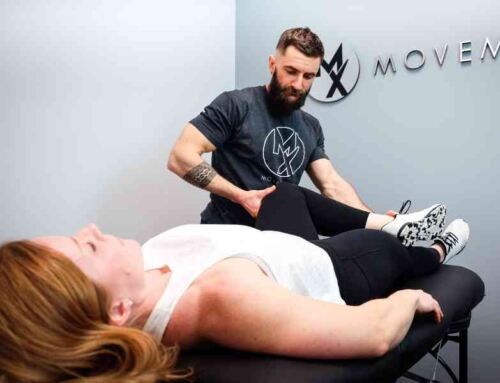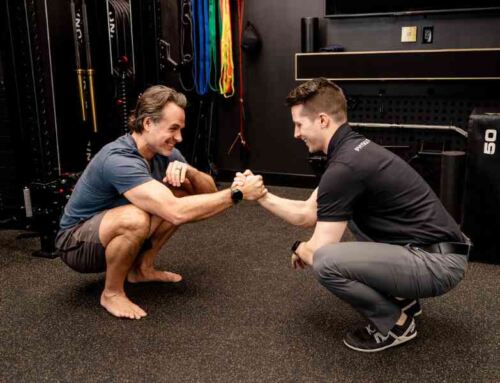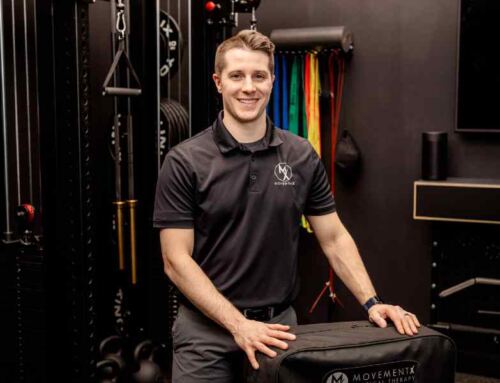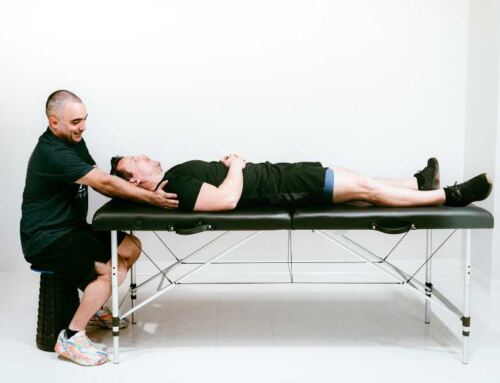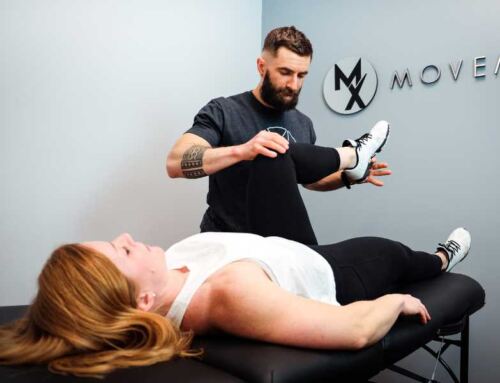Herniated Discs Will Resolve In 8 to 12 Weeks, Unless…
Herniated discs occur in roughly 2.8 million patients annually, causing pain, discomfort, and loss of mobility.
At MovementX, our team of specialized physical therapists are available via telehealth, in-home, or outdoor care to help people with herniated discs manage symptoms, reduce pain, improve mobility, and get back to enjoying life.
In this article, you will learn more about herniated discs: the symptoms, causes, and treatment options and discover how physical therapy is an effective treatment option for patients looking to improve recovery time and reach their movement goals.
What Is A Herniated Disc?
A herniated disc, also referred to as a slipped, ruptured, or bulging disc, is an injury of the spine and one of the most common causes of back, neck, and leg pain.
Your spine is made up of a series of bones called vertebrae. In between each vertebra are round cushions, called discs, that act like shock absorbers between your bones and allow you to move comfortably. A herniated disc occurs when the outer layer of a disc tears or loses its shape and the soft center, the nucleus, leaks out putting pressure on the spinal cord and nearby nerve roots. This compression can cause nerve inflammation as well as pain or discomfort.
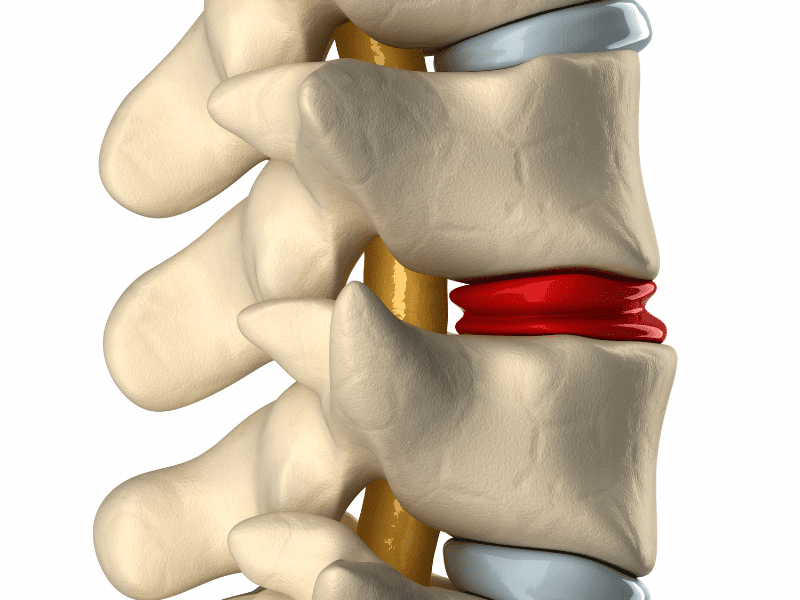
Herniated Disc Symptoms, Causes & Diagnosis
Most common in adults 30 to 50 years old and twice as likely to affect men than women, risk factors for herniated discs include:
- Aging (degenerative changes)
- Repetitive motions that strain the spine
- Excess weight
- Improper mechanics with lifting heavy objects
- Smoking
Herniated disc symptoms can present differently for each case. Some individuals may experience severe pain, while others have no pain at all. Similarly, the location of the herniation in the spine can also affect the severity of symptoms.
Herniated lumbar discs occur in the lower back and can cause sciatic nerve pain that feels sharp and is typically isolated to one side of the body. Other common herniated lumbar disc symptoms include general back pain, tingling, burning, or numbness in the legs and feet, difficulty walking, and muscle weakness.
Herniated cervical discs are located in the neck. Symptoms include neck pain, pain in the shoulders, and numbness, tingling, burning, or weakness in the arms and hands.
Herniated thoracic discs occur in the mid to upper back area. The thoracic spine area is the least common for herniated discs. Symptoms include pain in the upper back, pain in the chest or stomach, and muscle spasms.
Because back pain can be a symptom of numerous conditions, diagnosing herniated discs can often be difficult. In order to do so, your healthcare professional will conduct a thorough exam, assessing your pain, muscle strength and sensation, and possible additional testing. Common tests include MRI, X-rays, CT scans, Myelogram, and EMG.
Herniated Disc Treatment Options
There are treatment options you can try to manage your pain and speed up your recovery time. From lifestyle changes to physical therapy and even surgery, speak with your healthcare professional to find the treatment option that’s right for you.
Rest
While it seems simple enough, resting can be extremely beneficial for relieving initial swelling and inflammation in your back. Giving your body time to recover, even for just a few days, can help manage your pain. Additionally the use of ice can help reduce swelling and inflammation while numbing pain and the use of heat can relax the muscles surrounding the area.
Medication
Over-the-counter (OTC) pain and anti-inflammatory medications like ibuprofen or acetaminophen can be used to help manage mild to moderate pain and bring down the swelling in your spine.
Your healthcare professional might also prescribe short-term narcotic pain medications, muscle relaxants, or nerve medications if the OTCs are not effective in relieving pain or muscle spasms.
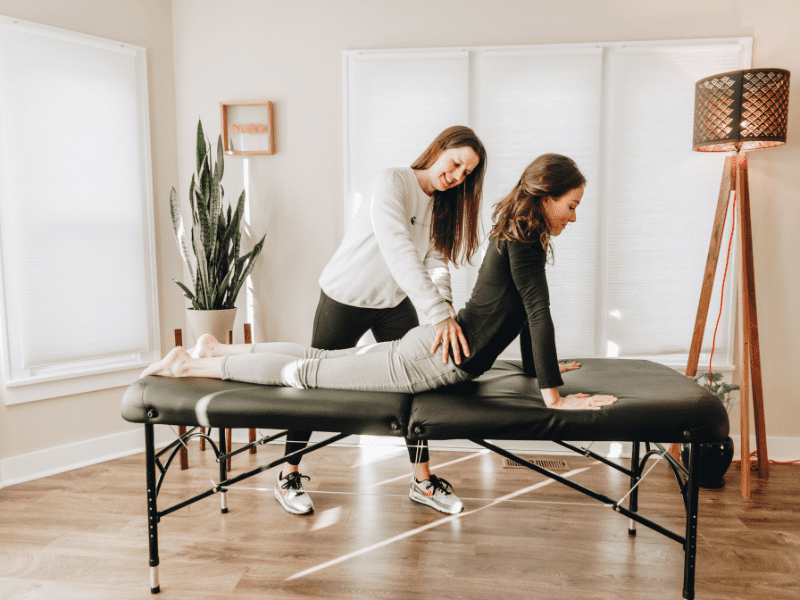
Physical Therapy
Many healthcare providers will also suggest physical therapy to help reduce pain as it can help speed up recovery times and regain any lost mobility from the injury. Using manual therapy, stretching, aerobic exercises, and strength training, physical therapy can help relieve your pain and support your back. Going a step further, at MovementX, our goal is to help you move better so you can move and live your best.
Learn more about MovementX services.
Surgery
Most often used as a last resort for severe herniated disc cases when other treatment options fail or if the bulging disc risks injury to the nerves connected to the bladder or bowels, surgery often leaves patients with residual pain and longer herniated disc recovery time.
Injections
Steroid injections directly into the spine can reduce swelling and inflammation, helping you move more comfortably and relieve pain. Spinal injections are often used after rest, OTC pain relievers, and physical therapy are all tried.
Herniated Disc Recovery Time
Roughly 85% of herniated disc patients find relief from symptoms within 8 to 12 weeks without any specific treatments.
Utilizing physical therapy to improve the symptoms of a herniated disc can speed up your total recovery time and help you move better. By relieving some of the pressure on your spinal nerves, physical therapy not only works to reduce pain, but your physical therapist can also work with you to build strength and improve flexibility to better support your spine.
Learn more about getting started with a physical therapist.
At MovementX, our highly specialized physical therapists and personal trainers are deeply passionate about helping you achieve your movement goals. Connect with a MovementX provider today.


